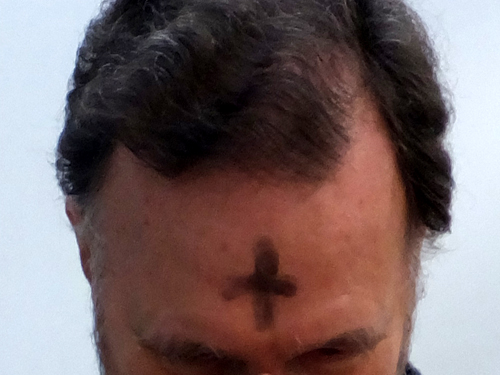
Pages in this section: Church Year | Advent | Christmas | Epiphany | Candlemas | Lent | Ash Wednesday | Mothering Sunday | Palm Sunday | Maundy Thursday | Good Friday | Holy Saturday | Easter | Ascension Day | Pentecost | Trinity Sunday | St James's Day | Harvest Festival | All Saints' Day & All Souls' Day | Remembrance Sunday
Ash Wednesday is the day after Shrove Tuesday, the first day of Lent, six and a half weeks before Easter. It is a 'moveable feast', falling on a different date each year as it depends on the date of Easter. It can occur as early as the 4th of February (5th of February on leap years) or as late as the 10th of March. Ash Wednesday is a day of being sorry for the things we have done wrong and asking God for forgiveness. A sign of the cross in ash is put on peoples' foreheads as a symbol to show that they are sorry for the things they have done wrong. The ash cross shows that through Christ's death and resurrection, we can be free from sin. The Church Colour for Ash Wednesday is purple.
What happens at St James's
At St James's Holy Communion is normally held in the evening of Ash Wednesday. At a certain point in the service, the priest dips his or her thumb in the ash paste and makes the sign of the cross on each person's forehead saying:
"Remember that you are dust, and to dust you shall return.
Turn away from sin and be faithful to Christ."
Background
Ash is left when something is burned and the ash used on Ash Wednesday is made from burning the palm crosses that have been kept from the previous year's Palm Sunday. (Palm Sunday celebrates Jesus' triumphant entry into Jerusalem, so when the crosses used in the last year's Palm Sunday service are converted to ashes, worshippers remember that defeat and crucifixion followed triumph.) The ashes of these crosses are then mixed with holy water (water which has been blessed) to make a greyish paste.
Find out more
Ash Wednesday (service booklet)
 |
 |
 |